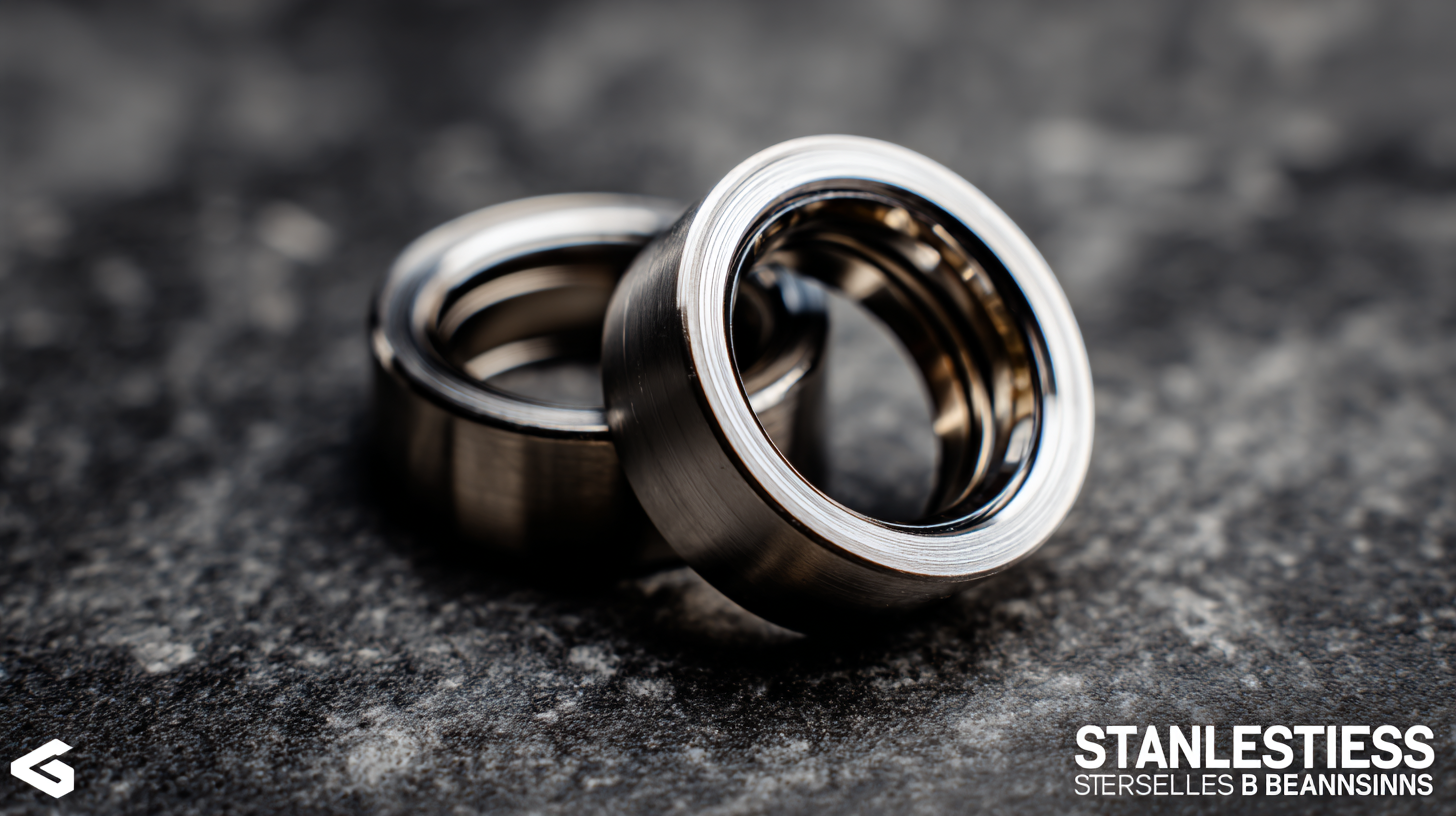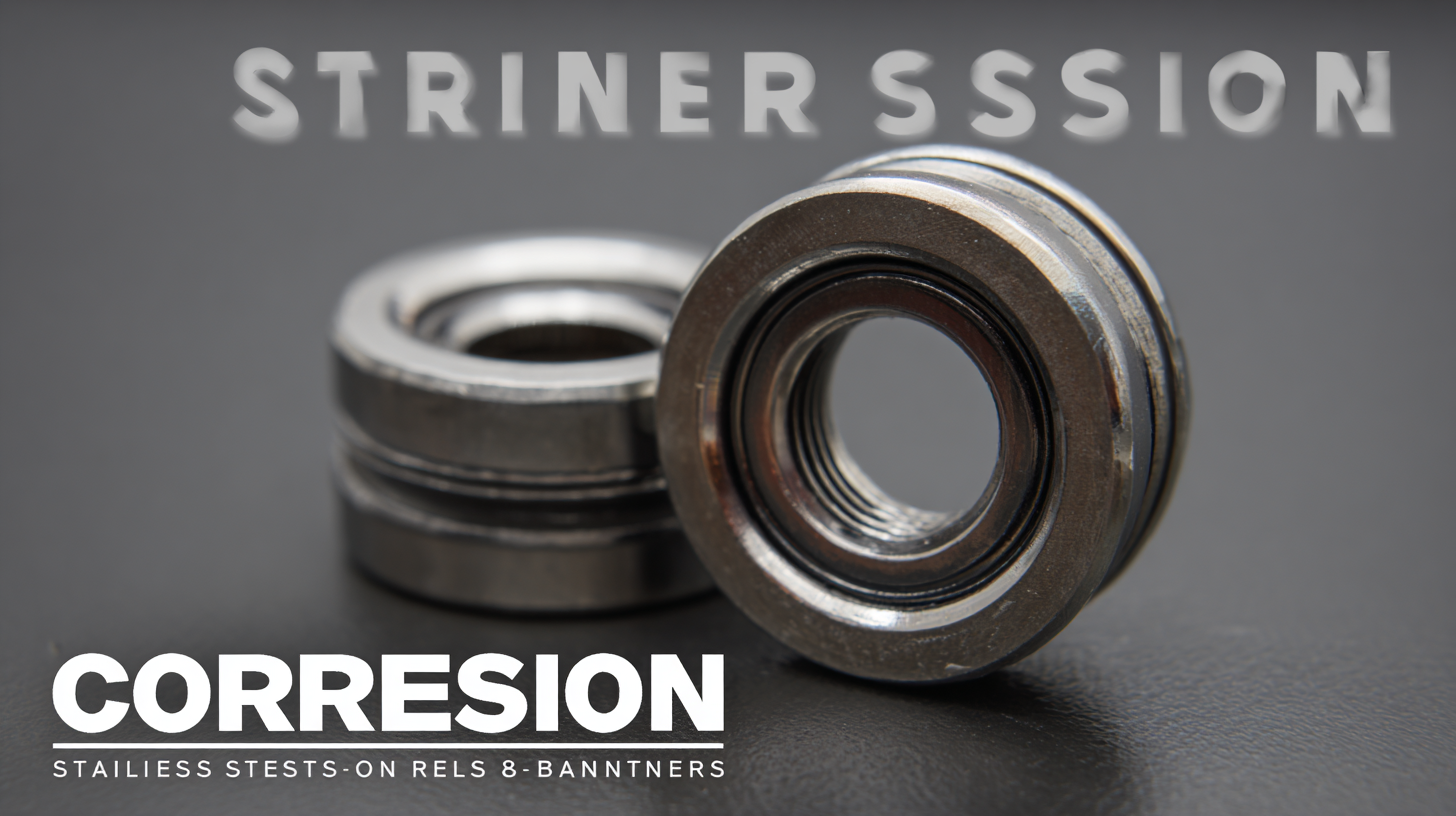8 Tips for Choosing the Best Stainless Steel Corrosion-Resistant Bearings for Your Needs
In today's industrial landscape, the demand for reliable and durable components is more critical than ever, particularly when it comes to the use of Stainless Steel Corrosion-Resistant Bearings. According to a report by MarketsandMarkets, the global bearings market is projected to reach $81.6 billion by 2025, with the demand for corrosion-resistant options rising due to their exceptional durability and performance in harsh environments.
Stainless steel bearings offer significant advantages, such as superior resistance to corrosion, lower maintenance costs, and enhanced longevity, making them ideal for diverse applications, from automotive to aerospace. However, with a myriad of options available, selecting the right Stainless Steel Corrosion-Resistant Bearings can be daunting. In this blog, we will explore eight essential tips to help you make informed decisions tailored to your specific needs, ensuring optimal performance and reliability in your projects.
Understanding the Different Types of Stainless Steel Bearings Available
When it comes to selecting stainless steel bearings, understanding the different types available can significantly impact the longevity and performance of your machinery. There are primarily two types of stainless steel used in bearings: 304 and 316.
304 stainless steel is commonly employed for its good corrosion resistance and affordability. It's suitable for less demanding environments, such as indoor applications where exposure to moisture is limited.
On the other hand, 316 stainless steel offers superior resistance to corrosion, especially in marine or harsh chemical environments. This type is often used in applications that involve exposure to saltwater or acidic substances.
Additionally, there are specialized stainless steel bearings coated with protective layers that enhance durability and reduce friction. Knowing the specific application and environment in which the bearings will operate is essential in determining the best type to choose, ensuring optimal performance and minimal maintenance over time.

Key Features to Look for in Corrosion-Resistant Bearings
When choosing corrosion-resistant bearings, it is essential to consider several key features that ensure optimal performance and longevity. One of the primary factors to evaluate is the quality of the materials used. High-grade stainless steel, often treated to enhance corrosion resistance, provides durability in harsh environments. Additionally, look for bearings that incorporate advanced materials such as hybrid aluminum-carbon nanotube composites, which have shown improved performance characteristics. These innovations offer enhanced resistance to wear and corrosion, significantly extending the lifecycle of bearings in demanding applications.
Another critical aspect is the bearing's design and lubrication system. Properly engineered bearings with seals or shields can prevent contaminants from entering and causing damage. Advanced lubrication options, including self-lubricating materials, can further enhance performance by minimizing friction and wear. When selecting bearings, it’s also wise to ensure they meet specific industry standards relevant to your application, guaranteeing that they can withstand the unique challenges posed by your operational environment. By focusing on these essential features, you can make an informed decision that meets your corrosion-resistance needs effectively.

How to Assess the Operating Environment for Your Bearing Selection
When selecting stainless steel corrosion-resistant bearings, understanding the operating environment is crucial. Factors such as temperature, humidity, exposure to corrosive substances, and load conditions can significantly influence bearing performance and longevity. According to a recent report by the National Association of Manufacturers, approximately 30% of bearing failures are attributed to unsuitable environmental conditions. Thus, it is essential to comprehensively assess these factors before making a selection.
Tip 1: Evaluate the typical temperature range in which the bearing will operate. Bearings used in high-temperature applications may require specific materials or lubricants to maintain performance. In contrast, low-temperature environments can lead to brittleness in certain types of stainless steel.
Tip 2: Consider the potential for exposure to corrosive agents. A report from the Society of Tribologists and Lubrication Engineers emphasizes that bearings exposed to harsh chemicals should feature additional protective coatings or moisture-resistant designs to prevent premature failure.
Tip 3: Analyze the load requirements. Overloading a bearing can cause it to experience increased wear rates, which can be exacerbated by high temperatures or contamination. Extensive analysis of load conditions, combined with environmental factors, will help in choosing the most suitable bearing for your needs.
Critical Factors Influencing Bearing Performance and Longevity
When selecting stainless steel corrosion-resistant bearings, understanding the critical factors that influence performance and longevity is essential. One of the most important elements to consider is the bearing material itself. High-quality stainless steel, often classified as AISI 304 or AISI 316, offers superior resistance to corrosion, making it ideal for applications exposed to harsh environments, such as marine or chemical settings. Additionally, the specific alloy composition can significantly impact the bearing's structural integrity and resistance to wear, influencing its overall lifespan.
Another key factor is the bearing design and size. Properly matching the bearing to the intended load and motion dynamics is crucial for optimal performance. Oversized bearings may lead to unnecessary friction and heat, while undersized options risk premature failure under pressure. Furthermore, lubrication plays a vital role in enhancing bearing performance. Selecting the right lubricant, whether grease or oil, ensures smooth operation and reduces wear over time. By carefully considering these factors, one can ensure the longevity and reliability of stainless steel corrosion-resistant bearings in various applications.
Cost Considerations: Finding the Balance Between Quality and Budget
When it comes to selecting the best stainless steel corrosion-resistant bearings, cost considerations play a crucial role in balancing quality with your budget. High-quality bearings can significantly enhance the longevity and performance of your machinery, but if the price goes beyond your financial limits, it can become a burden. It's essential to analyze the cost versus benefits, ensuring you don't sacrifice vital features for a better price point.
One of the top tips for making this choice is to evaluate the material quality. Opt for bearings constructed from high-grade stainless steel, as they offer superior resistance to corrosion, thus ensuring durability in challenging environments. Additionally, consider the manufacturer's reputation; trusted brands often provide quality guarantees and support, which can save you costs in the long run by reducing replacement and maintenance expenses.
Another tip is to explore bulk purchasing options. Buying in larger quantities can lead to significant savings that allow you to maintain quality without compromising your budget. As seen in recent advancements in technology, such as the new approaches to cost efficiency, it's about finding innovative methods to meet your needs without overspending. A strategic approach to selecting your bearings—like considering their long-term value—will ultimately lead to better investment decisions for your projects.
Cost Considerations: Stainless Steel Corrosion-Resistant Bearings

Home
Products
Industrial Bearings
Deep Groove Ball Bearings
Self-Aligning Ball Bearings
Angular Contact Ball Bearings
Cylindrical Roller Bearings
Taper Roller Bearings
Spherical Roller Bearings
Bearing housing or Accessories
Miniature Bearing
Thrust ball bearing
Radial Spherical Plain Bearing
Pillow Block Bearing
Needle Roller Bearings
Automotive Bearings
Agricultural Bearings
Special Material Bearings
Industry Application
About Us
News
Contact Us





